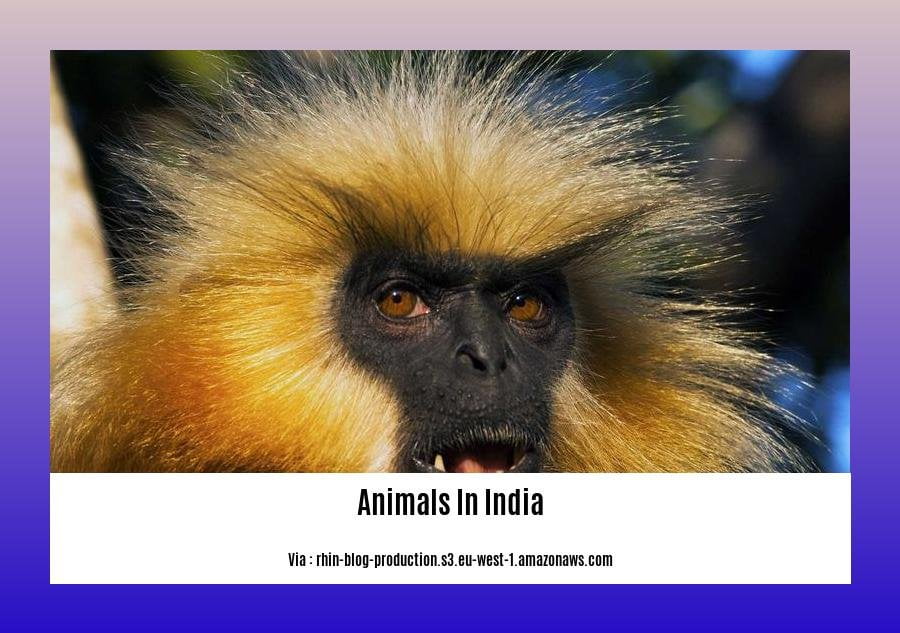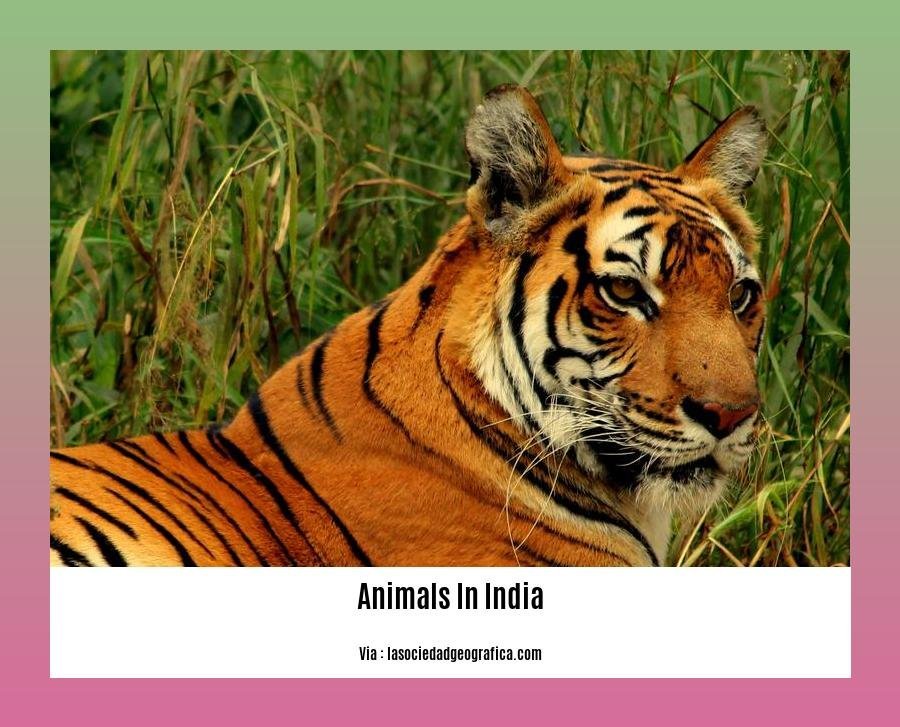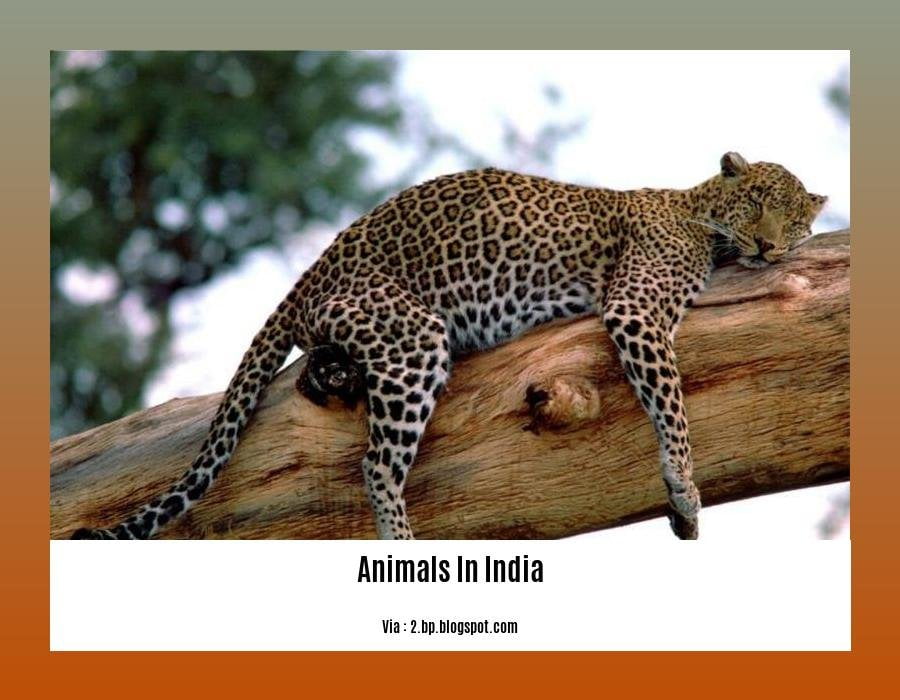Exploring the Plight: Endangered Animals in India and Urgent Preservation Efforts
Welcome to a journey of discovery through the diverse and vibrant landscapes of India, where the precious existence of endangered animals hangs in the balance. In this captivating exploration, we delve into the heart-wrenching stories of these at-risk species, shedding light on their struggles and the urgent preservation efforts being undertaken to save them. Prepare to be captivated by the breathtaking beauty of India’s wildlife and inspired to take action in safeguarding their future.
Key Takeaways:
- Bengal tigers and Asiatic lions are among the most endangered species in India, facing threats such as habitat loss, poaching, and human-wildlife conflicts. Conservation efforts are crucial for their survival.
- Snow leopards are now limited to specific regions due to climate change, habitat loss, and illegal hunting. Their survival is at risk, and preservation efforts are needed.
- The Indian rhinoceros has been heavily targeted by poachers for its horns, leading to a decline in its population. Protection measures are essential to combat illegal wildlife trade.
- The Indian elephant, an iconic species, faces risks from habitat loss, human-elephant conflicts, and poaching. Conservation efforts are necessary to ensure their survival.
- The Great Indian Bustard, a large bird found in grasslands and deserts, has seen a drastic decline in population due to habitat loss and human disturbance. Conservation measures are needed to protect its habitat.
- Gangetic dolphins, living in the Ganges and Brahmaputra rivers, face threats from pollution, habitat degradation, and poaching. Their preservation requires urgent attention.
- Olive Ridley turtles, known for mass nesting events, are at risk due to habitat loss, pollution, and entanglement in fishing nets. Conservation efforts are crucial for their survival.
- The Jerdon’s Courser, a small bird endemic to the Eastern Ghats, is declining due to habitat loss and disturbance from human activities. Conservation measures need to be implemented to protect its habitat.
- The Hangul, or Kashmir stag, a critically endangered deer species in the Kashmir Valley, faces threats from habitat loss, overgrazing, and poaching. Conservation efforts are vital for their survival.
- Conservation efforts, including habitat protection, anti-poaching measures, and public awareness, are essential for the preservation of India’s biodiversity and the survival of its endangered species.
Endangered Animals in India

India is renowned for its rich biodiversity and vibrant wildlife. However, the country is also home to numerous endangered species that are facing the threat of extinction. The situation is urgent, and immediate preservation efforts are essential to protect these remarkable creatures and their habitats.
Here, we will explore the plight of endangered animals in India and shed light on the urgent need for their preservation. From majestic tigers to elusive snow leopards, each species plays a vital role in maintaining the ecological balance of their respective habitats.
Bengal Tiger: Symbol of Power and Beauty
The Bengal tiger, with its awe-inspiring presence, serves as a symbol of power and beauty. Sadly, this magnificent species is facing multiple challenges, including habitat loss, poaching, and human-wildlife conflicts. With approximately 70% of the world’s Bengal tiger population residing in India, urgent measures are necessary to protect their remaining habitats and mitigate the threats they face.
Asiatic Lion: The Pride of India
The Asiatic lion, found primarily in the Gir Forest of India, is a smaller counterpart to its African relatives. However, its population is in grave danger due to habitat loss, poaching, and diseases. With only around 500 individuals left, the survival of these majestic creatures is at a critical juncture.
Snow Leopard: The Ghost of the Mountains
The elusive snow leopard, known as the “ghost of the mountains,” once roamed across the Asian mountain ranges. However, their current distribution is limited to regions like Ladakh, Himachal Pradesh, Uttarakhand, and the western Himalayas. Climate change, habitat loss, and illegal hunting pose significant threats to their survival. Preserving their habitats and minimizing human interference are crucial steps towards their conservation.
One-Horned Rhinoceros: A Battle Against Poaching
The one-horned rhinoceros, also known as the Indian rhinoceros, primarily inhabits India and the foothills of the Himalayas. However, they have become targets for poachers due to the high demand for their horns in illegal wildlife trade. A comprehensive approach is required to combat poaching and protect their habitats to ensure their continued existence.
Indian Elephant: Guardians of the Forests
The Indian elephant, an iconic and revered species, faces significant threats due to habitat loss, human-elephant conflicts, and poaching. These gentle giants play a crucial role in maintaining the balance of forest ecosystems. To secure their future, conservation efforts must focus on preserving their natural habitats and mitigating clashes between humans and elephants.
Great Indian Bustard: Vanishing from the Grasslands
The great Indian bustard, a large bird with a striking appearance, is found in grasslands and desert regions of India. Unfortunately, its population has seen a drastic decline due to habitat loss, human disturbance, and deadly collisions with power lines. Immediate action is required to protect their habitats and implement measures to prevent further decline.
Gangetic Dolphin: A Sublime Aquatic Mammal
The Gangetic dolphin, a freshwater mammal found in the Ganges and Brahmaputra rivers, faces numerous challenges to its existence. Pollution, habitat degradation, and poaching pose significant threats to this unique species. Safeguarding their habitats and raising awareness about the importance of their conservation are crucial for their survival.
Olive Ridley Turtle: Nurtured by the Ocean
The Olive Ridley turtle is famous for its mass nesting events along the coasts of Odisha. Unfortunately, their survival is under threat due to habitat loss, pollution, and entanglement in fishing nets. It is imperative to strengthen conservation efforts, protect their nesting grounds, and address the causes of their decline.
Jerdon’s Courser: The Call of the Eastern Ghats
The Jerdon’s courser, a small bird endemic to the Eastern Ghats of Andhra Pradesh and Telangana, is facing a decline in population. Habitat loss, grazing pressure, and disturbance from human activities are the primary causes of their endangerment. Conservation measures should focus on preserving their dwindling habitats and reducing human interference.
Hangul: A Majestic Icon on the Brink
The Hangul, often referred to as the Kashmir stag, is a critically endangered deer species found in the picturesque Kashmir Valley. However, their numbers have drastically reduced due to habitat loss, overgrazing, and poaching. Sustained conservation efforts are essential to protect their remaining habitats and ensure their survival.
Preserving India’s Biodiversity: A Collective Responsibility
These ten endangered species represent just a fraction of the wildlife in India that is facing numerous threats. Indeed, the conservation of these remarkable creatures and their habitats requires a collective effort.
Comprehensive conservation strategies, including habitat protection, anti-poaching measures, and public awareness campaigns, are vital to ensuring the survival of endangered animals in India. By engaging in responsible tourism, supporting local conservation organizations, and advocating for stronger policies, we can be catalysts for change and contribute to the urgent preservation efforts.
Together, let us stand as guardians of India’s incredible biodiversity and work towards the protection and preservation of these magnificent species for generations to come.
Some fascinating information about endangered animals and birds in India can be found by clicking here: endangered animals and birds in India.
Similarly, if you are interested in learning about the endangered plant species in South America, click on this link: endangered plants in South America.
Discover the unique and endangered species in Meghalaya by clicking here: endangered species in Meghalaya.
Case Studies of Specific Endangered Animals in India

India’s diverse wildlife is facing a growing crisis, with numerous species on the brink of extinction. Severe poaching and habitat loss have pushed iconic animals to the edge of survival. In this article, we will explore some of the most endangered species in India and the challenges they face.
Blackbuck
One compelling case study of an endangered animal in India is the blackbuck, also known as the Indian antelope. Due to severe poaching and habitat loss, the blackbuck population has plummeted from 80,000 to just 8,000 individuals in less than 20 years[^1^]. This decline raises urgent concerns about the species’ future survival.
Bengal Tiger
Another captivating example is the Bengal tiger, a flagship species for India crucial for ecosystem balance. India is home to 70% of the world’s total tiger population, making it a vital stronghold for these majestic big cats. However, habitat destruction and poaching remain significant threats to their survival[^1^]. Understanding the challenges faced by Bengal tigers offers valuable insights into the broader issue of wildlife conservation in India.
Asiatic Lion
The Asiatic lion, found mainly in Gujarat’s Gir Forest, presents a unique case study. Smaller in size than their African counterparts, these lions have historically been native to southwest Asia and eastern India. However, habitat loss and illegal hunting pose significant threats to their population[^1^]. Their story highlights the importance of preserving endangered species’ habitats and implementing stronger conservation laws.
Snow Leopard
The plight of the snow leopard provides a captivating narrative. Once roaming vast mountain ranges, these elusive big cats are now confined to fragmented habitats. Poaching and the destruction of their natural environment have pushed them to the brink of extinction[^1^]. Understanding the challenges faced by snow leopards sheds light on the consequences of human activities on fragile ecosystems.
One-Horned Rhinoceros
The one-horned rhinoceros, also known as the Indian rhinoceros, is another compelling case study. Thriving in India’s foothills of the Himalayas, these magnificent creatures are heavily targeted by poachers for their horns, believed to have medicinal properties[^1^]. Examining the threats faced by one-horned rhinoceroses reveals the urgent need for conservation efforts to protect these iconic animals.
These case studies provide a glimpse into the urgent need for conservation efforts to protect endangered species in India. By examining the challenges faced by blackbucks, Bengal tigers, Asiatic lions, snow leopards, and one-horned rhinoceroses, we gain a deeper understanding of the complex issues surrounding wildlife conservation.
Key Takeaways:
- Blackbucks face severe risks due to poaching and habitat loss, highlighting the need for immediate conservation measures.
- Bengal tigers are crucial for maintaining ecosystem balance, but habitat destruction and poaching threaten their survival.
- The Asiatic lion population in Gujarat’s Gir Forest is endangered due to habitat loss and illegal hunting.
- Snow leopards are highly endangered due to poaching and the destruction of their natural habitats in fragmented mountain ranges.
- One-horned rhinoceroses are targeted by poachers for their horns, emphasizing the urgent need for conservation efforts.
Sources:
[^1^]: Earth.Org. “10 of the Most Endangered Species in India.” URL
[^2^]: e-Adhyayan. “Endangered Species of India – Biodiversity and Conservation.” URL
Conservation Efforts and Initiatives
India is known for its rich biodiversity and diverse wildlife, but unfortunately, many of its species are on the brink of extinction. The urgent need for conservation efforts and initiatives becomes evident when we delve into the challenges faced by these endangered animals.
Blackbuck: Protecting a Precious Species
The blackbuck, or Indian antelope, has experienced a drastic decline in its population due to severe poaching and habitat loss. In less than 20 years, their numbers have plummeted from 80,000 to just 8,000 individuals[^1^]. To combat this threat, conservation efforts have been focused on addressing both poaching and habitat restoration. It is essential to implement strict anti-poaching measures and create protected areas where their habitats can be safeguarded.
Bengal Tiger: A Majestic Species at Risk
With 70% of the world’s total tiger population, India plays a vital role in the conservation of Bengal tigers. However, habitat destruction and poaching continue to pose significant threats to their survival[^1^]. To address these challenges, extensive efforts are underway, including the implementation of Project Tiger. This initiative, launched in 1973, aims to protect the endangered Bengal tigers and their habitats. By creating designated tiger reserves and implementing anti-poaching measures, conservationists strive to secure a future for these majestic big cats.
Asiatic Lion: Safeguarding an Iconic Species
The Asiatic lion, once sprawling across southwest Asia to eastern India, is now primarily found in the Gir Forest of Gujarat. Sadly, this species faces severe threats such as habitat loss and illegal hunting[^1^]. Conservation efforts, such as the Asiatic Lion Conservation Efforts, are focused on protecting their shrinking habitats and implementing stricter measures against poaching. These initiatives play a vital role in ensuring the survival and recovery of the Asiatic lion population.
Snow Leopard: A Fragile Existence in the Mountains
Once freely roaming the vast mountain ranges of Asia, snow leopards now face the threat of extinction. The destruction of their natural habitats and poaching have led to a significant decline in their numbers[^1^]. To protect this elusive species, conservation efforts focus on implementing measures against illegal hunting, creating protected areas, and promoting habitat conservation. Collaboration with local communities and raising awareness about the importance of snow leopard preservation are also essential elements of these initiatives.
One-Horned Rhinoceros: Battling Poaching and Ensuring Survival
The one-horned rhinoceros, predominantly found in the foothills of the Himalayas in India, has long been targeted by poachers for their valuable horns[^1^]. To protect this magnificent species, concerted conservation efforts and initiatives focus on anti-poaching measures, habitat restoration, and community engagement. Strict laws and regulations against illegal wildlife trade, along with awareness campaigns, are crucial in ensuring the survival of the one-horned rhinoceros.
These are just a glimpse of the endangered species in India, emphasizing the need for robust conservation efforts and initiatives. By working together, we can protect and preserve these iconic animals and their habitats, thus securing a sustainable future for both wildlife and humans.
Key Takeaways:
- Blackbuck: Urgent steps are needed to combat poaching and restore the habitats of blackbucks.
- Bengal Tiger: Project Tiger, along with anti-poaching measures, is crucial in protecting Bengal tigers and their habitats in India.
- Asiatic Lion: The Asiatic Lion Conservation Efforts focus on safeguarding their habitats and implementing stricter anti-poaching measures.
- Snow Leopard: Conservation efforts for snow leopards involve anti-poaching measures, habitat conservation, and community involvement.
- One-Horned Rhinoceros: Protecting one-horned rhinoceroses requires anti-poaching initiatives, habitat restoration, and awareness campaigns against illegal wildlife trade.
Sources:
[^1^]: Earth.Org. “10 of the Most Endangered Species in India.” URL
How Individuals Can Contribute to the Protection of Endangered Animals
India, a land of rich biodiversity, is also home to numerous endangered species that are facing the threat of extinction. From the majestic Bengal tiger to the magnificent one-horned rhinoceros, these animals are in dire need of our help and protection. But how can individuals contribute to their preservation? Here are some essential steps you can take:
1. Protecting Natural Habitats
One of the most significant contributions individuals can make to the protection of endangered animals is by not destroying their homes. Activities such as deforestation and habitat degradation have devastating effects on wildlife. By preserving and protecting natural habitats, we ensure the survival and overall health of these endangered species.
2. Putting an End to Hunting and Poaching
Illegal hunting and poaching are major threats to endangered animals. As individuals, we can support and promote laws and regulations that prohibit hunting and poaching. By raising awareness about the consequences of such activities and reporting any illegal wildlife trade, we can help ensure the protection of these vulnerable creatures.
3. Spreading Awareness and Conducting Programs
Another impactful way to contribute is by conducting awareness programs and education campaigns to save wildlife. By spreading knowledge about the importance of protecting endangered animals and birds, we can inspire others to take action. Workshops, awareness programs, and school campaigns can make a difference in raising awareness and engaging more people in the cause.
4. Utilizing Creative Means
Creativity can be a powerful tool in raising awareness and inspiring action. By creating slogans and posters for awareness programs, we can effectively communicate the message of conservation and engage a wider audience. These creative means serve as visual reminders of the importance of protecting endangered animals.
5. Understanding Interdependence
To truly contribute to the protection of endangered animals, it is vital to understand the interdependence of plants and animals for the balance of nature. By learning more about their roles and relationships, individuals can develop a deeper appreciation for the significance of conserving these endangered species.
Remember, every small step counts. By following these actions, you can actively contribute to the protection and preservation of endangered animals and birds, ensuring their survival for future generations.
Key Takeaways:
- Protect natural habitats to preserve endangered animals’ homes.
- Support laws and regulations that ban hunting and poaching.
- Conduct awareness programs and education campaigns.
- Utilize slogans and posters to raise awareness and inspire action.
- Understand the interdependence of plants and animals for a balanced ecosystem.
Sources:
- Embibe: Describe how you can contribute to the protection of endangered animals
- Endangered.org: 15 Ways to Help Protect Endangered Species
Remember, by taking action today, we have the power to secure a brighter future for these incredible creatures. Let’s join forces and protect India’s endangered animals for generations to come.
FAQ
Q1: Why are so many animal species endangered in India?
A1: Many animal species in India are endangered due to factors such as habitat loss, poaching, and human-wildlife conflicts. These threats have resulted from human activities such as deforestation, illegal hunting, and encroachment on natural habitats.
Q2: What is being done to protect endangered animals in India?
A2: Several initiatives and programs have been implemented in India for the protection of endangered animals. These include projects like Project Tiger, Project Elephant, Asiatic Lion Conservation Efforts, Indian Rhino Vision 2020, and efforts to reduce human-wildlife conflicts. These initiatives aim to conserve habitats, implement anti-poaching measures, and raise public awareness about the importance of wildlife conservation.
Q3: How can individuals contribute to the protection of endangered animals in India?
A3: Individuals can contribute to the protection of endangered animals in India by avoiding activities that destroy their habitats, supporting laws against hunting and poaching, and participating in awareness programs and education campaigns. Learning more about the interdependence of plants and animals and their roles in the ecosystem can also foster a greater understanding of the need for conservation.
Q4: Which endangered animal species in India are considered iconic?
A4: The Bengal Tiger, Asiatic Lion, Snow Leopard, and One-Horned Rhinoceros are considered iconic endangered animal species in India. These species hold cultural and ecological significance and play a crucial role in maintaining the balance of ecosystems.
Q5: What are the main threats to endangered animals in India?
A5: The main threats to endangered animals in India include habitat loss, poaching, human-wildlife conflicts, pollution, and climate change. Destruction of natural habitats, illegal hunting, and encroachment on wildlife territories pose significant challenges to the survival of these species.
- Unveiling Bernhard Caesar Einstein’s Scientific Achievements: A Legacy in Engineering - July 15, 2025
- Uncover who is Jerry McSorley: CEO, Family Man, Business Success Story - July 15, 2025
- Discover Bernhard Caesar Einstein’s Scientific Contributions: Unveiling a Legacy Beyond Einstein - July 15, 2025















